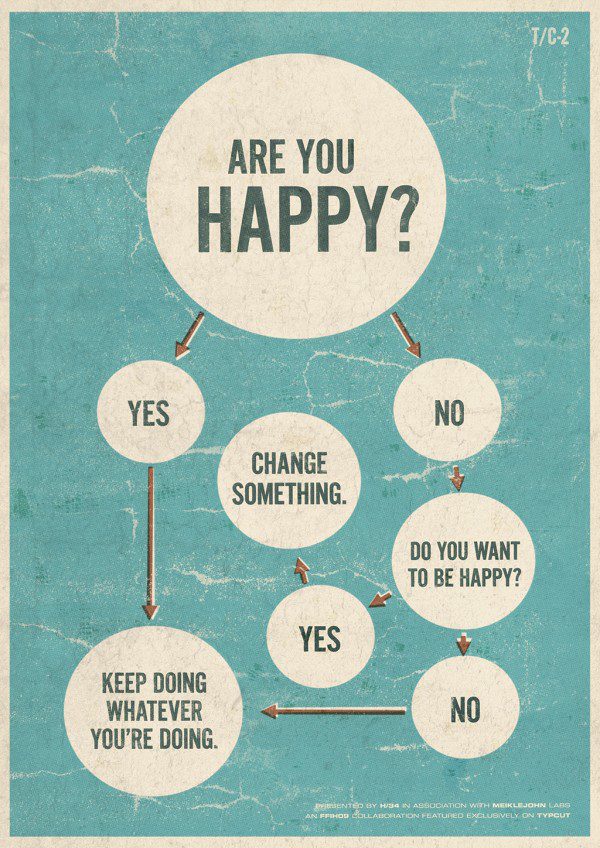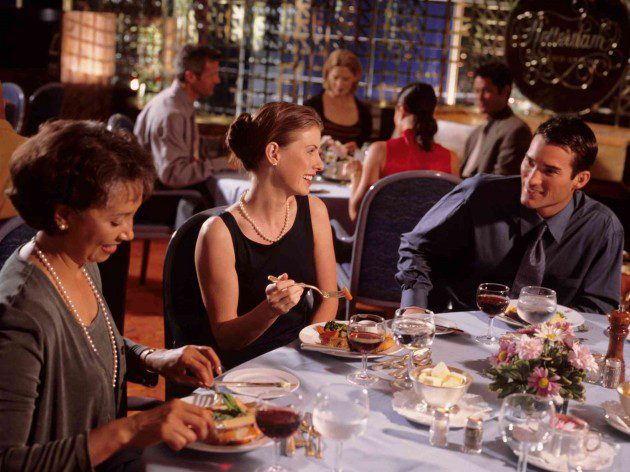A large part of socialization for people in Corporate careers is with their fellow managers and staff. Long workdays can lead to little time for after-hour entertainment with friends and weekends are usually taken hostage with the mundane tasks of household chores, laundry, and bill paying. One of the many challenges of post-corporate life is discovering activities that make us happy and engaged in our new retirement life. There can be a period of time after entering retirement when life seems a little lonely, devoid of the morning coffee chats with office mates, interactions with staff or sharing of ideas during project meetings. Many of us started off on our own form of internal Hero’s Journey exploration, searching for an identity no longer associated with a former job and recrafting ourselves into a person that reflects outwardly our inner passions and dreams.
Where you are is a result of who you were, but where you go depends entirely on who you choose to be. – Hal Elrod
Exploring our inner dimensions does not have to be in exclusion of other people and, in fact, dozens of studies have shown that people who have satisfying relationships with family, friends, and their community are happier, have fewer health problems, and live longer. Forging and sustaining social connections not only give us pleasure, they also influence our long-term health in ways every bit as powerful as adequate sleep, a good diet, and not smoking. Conversely, a relative lack of social ties is associated with depression and later-life cognitive decline, as well as with increased mortality. One study, which examined data from more than 309,000 people, found that lack of strong relationships increased the risk of premature death from all causes by 50% – an effect on mortality risk roughly comparable to smoking up to 15 cigarettes a day, and greater than obesity and physical inactivity. I think those statistics should be enough to get us off the couch and out to a Meetup group or community center!
I recently came across an article from the wonderfully sarcastic and exceptional journalist, Ruth Whitman, who writes about the issues associated with our modern societys new fixation with solo journeys to find happiness. I hope you find it as engaging and poignant as I did!
The New York Times-October 27, 2017, by Ruth Whippman
Choosing My Happiness App
In a particularly low moment a few years back, after arriving friendless and lonely from Britain to live in the United States, I downloaded a happiness app onto my phone. It was surprisingly hard to choose one. There were close to a thousand bliss-promising options in the app store – ones that would teach you to meditate or be grateful, or that would send you photomontages of sunsets and puppies or unfeasibly flattering shots of your loved ones (giving you a moment to temporarily ignore your actual, less attractive loved ones.)
The app I eventually chose messaged me every hour or so with a positive affirmation that I was supposed to repeat to myself over and over. I am beautiful, or I am enough. The problem was, every time my phone buzzed with an incoming message, I would get a Pavlovian jolt of excitement thinking an actual person was trying to contact me. I am enough, I would snarl bitterly upon realizing the truth, unable to shake the feeling that, without friends or community, I really wasn’t.
“Happiness comes from within”, said the inspirational photo-card in my Facebook news feed a few days later, the loopy white meme-font set against a backdrop of a woman contorted into a yoga pose so tortuous it looked as though she might actually be investigating her own innards trying to locate her bliss.
Having spent the last few years researching and writing a book about happiness and anxiety in America, I’ve noticed that this particular strain of happiness advice – the kind that pitches the search for contentment as an internal, personal quest, divorced from other people – has become increasingly common. Variations include “Happiness is determined not by what’s happening around you, but what’s happening inside you”, “Happiness should not depend on other people” and the perky and socially shareable “Happiness is an inside job”. One email I received from a self-help mailing list even doubled down on the idea with the turbocharged word mash-up withinwards, (although when the subject heading Go Withinwards landed in my inbox I briefly thought it was an ad for a nose-to-tail offal restaurant.)
The Falsehood of Happiness From the Inside
In an individualistic culture powered by self-actualization, the idea that happiness should be engineered from the inside out, rather than the outside in, is slowly taking on the status of a default truism. This is happiness framed as journey of self-discovery, rather than the natural byproduct of engaging with the world; a happiness that stresses emotional independence rather than interdependence; one based on the idea that meaningful contentment can be found only by a full exploration of the self, a deep dive into our innermost souls and the intricacies and tripwires of our own personalities. Step 1: Find Yourself. Step 2: Be Yourself.
This isolationist philosophy is showing up not just in the way that many Americans talk about happiness, but in how they spend their time. People who study these things have observed a marked increase in solitary “happiness pursuits” activities carried out either completely alone or in a group without interaction – with the explicit aim of keeping each person locked in her own private emotional experience.
Spiritual and religious practice is slowly shifting from a community-based endeavor to a private one, with silent meditation retreats, mindfulness apps and yoga classes replacing church socials and collective worship. The self-help industry – with its guiding principle that the search for happiness should be an individual, self-focused enterprise – is booming, with Americans spending more than $1 billion on self-help books a year to help guide them on their inner journeys. Meanwhile, self-care has become the new going out.

But while placing more and more emphasis on seeking happiness within, Americans in general are spending less and less time actually connecting with other people. Nearly half of all meals eaten in this country are now eaten alone. Teenagers and young millennials are spending less time just hanging out with their friends than any generation in recent history, replacing real-world interaction with smartphones.
And it’s not just young people. The Bureau of Labor Statistics Time Use Survey shows that the average American now spends less than four minutes a day hosting and attending social events, a category that covers all types of parties and other organized social occasions. That’s 24 hours a year, barely enough to cover Thanksgiving dinner, and your own child’s birthday party.
Social Interaction on the Downward Spiral
The same time-use data also allocates another, broader category to socializing and communicating, a designation that includes not just the good stuff – the heart-to-heart with an adoring spouse, or setting the world to rights with a dear friend over a bottle of wine – but any kind of socializing and communicating at all between two adults, where this is their main activity rather than an incidental part of something else, like working. All in all – and that includes daily bouts of nagging, arguing and whining – the average American spends barely more than half an hour a day on social communication. Compare that to time per day spent watching television (three hours) or even grooming (one hour for women, and just over 44 minutes for men).
Self-reflection, introspection and some degree of solitude are important parts of a psychologically healthy life. But somewhere along the line we seem to have gotten the balance wrong. Because far from confirming our insistence that happiness comes from within, a wide body of research tells us almost the exact opposite.
Academic happiness studies are full of anomalies and contradictions, often revealing more about the agendas and values of those conducting them than the realities of human emotion. But if there is one point on which virtually every piece of research into the nature and causes of human happiness agrees, it is this:
Our happiness depends on other people.
Lack of Social Interaction Leads to an Unhealthy Life
Study after study shows that good social relationships are the strongest, most consistent predictor there is of a happy life, even going so far as to call them a necessary condition for happiness, meaning that humans can’t actually be happy without them. This is a finding that cuts across race, age, gender, income and social class so overwhelmingly that it dwarfs any other factor.
And according to research, if we want to be happy, we should really be aiming to spend less time alone. Despite claiming to crave solitude when asked in the abstract, when sampled in the moment, people across the board consistently report themselves as happier when they are around other people than when they are on their own. Surprisingly this effect is not just true for people who consider themselves extroverts but equally strong for introverts as well.
What’s more, neglecting our social relationships is actually shockingly dangerous to our health. Research shows that a lack of social connection carries with it a risk of premature death comparable to that of smoking, and is roughly twice as dangerous to our health as obesity. The most significant thing we can do for our well-being is not to find ourselves or go within. Its to invest as much time and effort as we can into nurturing the relationships we have with the people in our lives.
Given all that, the next time you have the choice between meditating and sitting in a bar with your friends complaining about meditation class, you should probably seriously consider going to the bar, no matter what your happiness app says.
ABOUT RUTH WHIPPMAN
Ruth’s humorous essays, cultural criticism and political journalism have appeared in The New York Times, Time magazine, New York magazine, The Guardian, The Independent, The Huffington Post, Glamour Magazine and The Pool amongst other places. She is a regular contributor to Time.com, a blogger for the Huffington Post and she contributes to the Observer magazines Inner Life column.
She is the author of America the Anxious, How Our Pursuit of Happiness is Creating a Nation of Nervous Wrecks.










0 Comments